Pixel 10 Pro Fold vs Pixel 10 Pro XL: Another battle unfolds
We may earn a commission if you make a purchase from the links on this page.

Intro
The Google Pixel 10 series is finally here, and there are a slew of interesting updates on Google's newest flagships. The second iteration of the Pixel Pro XL model is particularly interesting, and given the price tag, it begs an interesting question.
Google Pixel 10 Pro Fold vs Google Pixel 10 Pro XL differences:
| Pixel 10 Pro Fold | Pixel 10 Pro XL |
|---|---|
| Design similar to the Pixel 9 Pro Fold, but with slimmer hinge | Very similar to last year's XL model, flat sides with curved corners |
| A 6.4-inch cover and 8-inch internal screens | 6.8-inch Super Actua OLED display |
| 3,000 nits of peak brightness | 3,300 nits of peak brightness |
| Triple rear camera (48MP+10.5MP+10.8MP), dual 10MP selfie cameras | 50MP+48MP+48MP rear camera system |
| Google Tensor G5 (3nm) with 16GB of RAM possible | The same Google Tensor G5 (3nm) with 16GB of RAM |
| Just 256GB and 512GB versions, no 1TB option | 256GB, 512GB, 1TB storage variants |
| 5,015 mAh battery | Bigger 5,200 mAh battery |
| IP68 water and dust resistance | IP68 water and dust resistance |
| 30W wired charging, 15W wireless (Qi2 certified) | 45W wired, 25W wireless charging (Qi2.2 certified) |
| Android 16, seven years of software updates | Android 16, seven years of software updates |
Table of Contents:
Read more:
Design and Size
Similar to last year
There are no huge changes to the design when it comes to both the Pixel 10 Pro Fold and the Pixel 10 Pro XL. These devices follow the path charted by their respective predecessors. That being said, they are conceptually different from one another—one has two displays and folds in half, while the other employs a more conventional candy bar design.
Pixel 10 Pro XL in Moonstone
Pixel 10 Pro XL in Obsidian
Pixel 10 Pro XL in Porcelain
Pixel 10 Pro XL in Jade
The result is two phones that differ in size and weight. The Pixel 10 Pro XL is lighter, by about 25 grams, while the Pixel 10 Pro Fold is thicker folded and also narrower. The camera bump is also different between the two; the 10 Pro Fold uses the same square-ish camera housing as its predecessor, while the 10 Pro XL model opts for the evolved camera bar—a long horizontal camera bump.
| Pixel 10 Pro Fold | Pixel 10 Pro XL |
|---|---|
| Thickness 5.2 mm unfolded 10.8 mm folded | Thickness 8.5 mm |
| Weight 258 grams | Weight 232 grams |
In terms of building materials and colors, again there are no major differences between the two. Granted, the Pixel 10 Pro Fold can't use tempered glass over its main folding screen, but other than that, we have the same glass-aluminum sandwich on both devices.
The back and the cover screen of the Pixel 10 Pro Fold are protected by Gorilla Glass Victus 2, the same as the one used on the front and back of the Pixel 10 Pro XL.
The back and the cover screen of the Pixel 10 Pro Fold are protected by Gorilla Glass Victus 2, the same as the one used on the front and back of the Pixel 10 Pro XL.
An interesting upgrade is the alleged IP68 water and dust protection on the Pixel 10 Pro Fold. This helps with durability and brings those two phones closer together when it comes to protection from the elements.
| Pixel 10 Pro Fold colors | Pixel 10 Pro XL colors |
|---|---|
| - | Obsidian |
| - | Porcelain |
| Moonstone | Moonstone |
| Jade | Jade |
The colors are identical on these two, but the Pixel 10 Pro XL has two additional hues to choose from. The non-folding Pixel gets the usual Porcelain and Obsidian color options, while the Pixel 10 Pro Fold is available only in the two new shades—Moonstone (sort of a graphite gray) and Jade (pastel green).
Display Differences
2 versus 1
Another big difference, inherited from the design of these two, lies in the display department. Unsurprisingly, the Pixel 10 Pro Fold comes with two screens, one big 8-inch flexible OLED that folds in half, and another 6.4-inch cover screen on the outside.
The Pixel 10 Pro XL, on the other hand, relies on just one panel, a 6.8-inch OLED. Along with the size (and count) difference, there's a difference in peak brightness. Looking at the specs sheet, Google says the Pixel 10 Pro Fold can achieve 3,000 nits of peak brightness, while the Pro XL can go up to 3,300 nits.
We have to measure those claims in our lab, but Pixel phones have been near the top of our brightness charts, so expect some impressive numbers here soon.
| Pixel 10 Pro Fold | Pixel 10 Pro XL |
|---|---|
| Cover screen 6.4 inches | - |
| Main screen 8.0 inches | Main screen 6.8 inches |
| Peak Brightness 3,000 nits | Peak Brightness 3,300 nits |
In terms of resolution, pixel density, and display refresh rate, things look similar. Both phones feature LTPO 120 Hz refresh rate displays (across all screens when it comes to the Pixel 10 Pro Fold).
This means that the Pixel 10 Pro XL still has an advantage with its 1344 x 2992 pixel resolution, resulting in around ~486 PPI, while the Pixel 10 Pro Fold PPI figures are ~373 PPI for the main screen and ~408 PPI for the cover screen. But then again, it has two displays.
Performance and Software
Tensor G5 enters the stage
There's a big change when it comes to hardware this year. Google has decided to swap the manufacturing of the Tensor chip from Samsung foundries to TSMC. This might not sound like a big deal, but there are inherited advantages resulting from this change.
TSMC has better yield and better quality of the silicon compared to Samsung, and industry experts expect a decent boost in both performance and efficiency on the Tensor G5. The architecture and core layout are also different, potentially alleviating the not impressive battery life on some Pixel devices of late.
The good news is that both the Pixel 10 Pro Fold and the Pixel 10 Pro XL will get the new silicon being part of the same series. Google cites 60% improvement in TPU performance (which is AI-related), and up to 34% increase in CPU scores compared to last generation. We're going to test these claims once we lay our hands on these two devices.
TSMC has better yield and better quality of the silicon compared to Samsung, and industry experts expect a decent boost in both performance and efficiency on the Tensor G5. The architecture and core layout are also different, potentially alleviating the not impressive battery life on some Pixel devices of late.
| Pixel 10 Pro Fold | Pixel 10 Pro XL |
|---|---|
| Chipset Tensor G5 3nm | Chipset Tensor G5 3nm |
| Memory 16GB | Memory 16GB |
| Storage 256GB 512GB | Storage 256GB 512GB 1TB |
In terms of RAM, both phones are equipped with 16GB of LPDDR5, but there's a difference in onboard storage. The Pixel 10 Pro XL has a 1TB option, which might be godsent for some, while the Pixel 10 Pro Fold caps at 512GB. No microSD card slot on eighter of those two.
Camera
Better on the Pro XL
Fitting a powerful camera system on a foldable is proving to be a difficult task, at least for Google. The Pixel 10 Pro Fold carries over the same camera system from its predecessor with one 48 MP main camera, a 10.5 MP ultrawide, and a 10.8 MP telephoto.
The huge camera bump on the Pro XL (jokingly called "the shelf") allows for much more wiggle room when it comes to camera hardware. The Pixel 10 Pro XL has three big sensors on its back: a 50MP main one, a 48 MP ultrawide, and another 48 MP sensor under the periscope telephoto camera.
There's also a brand-new front camera on the Pixel 10 Pro XL, a 42MP sensor with Dual PD autofocus, so another possible advantage for the non-folding Pixel.
The huge camera bump on the Pro XL (jokingly called "the shelf") allows for much more wiggle room when it comes to camera hardware. The Pixel 10 Pro XL has three big sensors on its back: a 50MP main one, a 48 MP ultrawide, and another 48 MP sensor under the periscope telephoto camera.
| Pixel 10 Pro Fold | Pixel 10 Pro XL |
|---|---|
| Main camera 48MP | Main camera 50MP |
| Ultrawide 10.5MP | Ultrawide 48MP |
| Telephoto 10.8MP 5X | Telephoto 48MP, 5X |
| Cover selfie 10MP | Cover selfie 42MP |
| Internal selfie 10MP | Internal selfie - |
Google has always been at the forefront of image processing (ever since the first Pixels), and it's too early to sign off on the Pixel 10 Pro Fold, even though it appears to have inferior camera hardware. There are some really cool new AI features on both of these phones, including a new Camera Coach mode, powered by Gemini. It basically analyzes your frame and suggests the best settings.
We will test those in real life and include comparison samples once we lay our hands on the new Pixels.
Battery Life and Charging
Advantage XL?
There are some nice surprises when it comes to the battery and charging situation. Not only has Google been able to cram in more battery capacity, but the Qi2 wireless standard is supported on both phones.
The Pixel 10 Pro XL comes with a pretty decent 5,200 mAh cell onboard, while the Pixel 10 Pro Fold has a slightly smaller 5,015 mAh battery (divided into two cells in both wings of the foldable). It's a pretty good capacity for a folding phone, but let's not forget how power-hungry a two-display phone can be.
We have to run our battery benchmark to see which one of these comes on top, but we would place our bets on the Pixel 10 Pro XL.
The Pixel 10 Pro XL comes with a pretty decent 5,200 mAh cell onboard, while the Pixel 10 Pro Fold has a slightly smaller 5,015 mAh battery (divided into two cells in both wings of the foldable). It's a pretty good capacity for a folding phone, but let's not forget how power-hungry a two-display phone can be.
We have to run our battery benchmark to see which one of these comes on top, but we would place our bets on the Pixel 10 Pro XL.
| Pixel 10 Pro Fold | Pixel 10 Pro XL |
|---|---|
| Battery 5,015 mAh | Battery 5,200 mAh |
| Wired charging 30W wired | Wired charging 45W |
| Wireless charging 15W wireless (Qi2 standard) | Wireless charging 25W (Qi2.2 standard) |
The same goes for the charging—the Pixel 10 Pro XL offers faster wired and wireless charging, reaping the benefits of being a conventional non-folding phone. The Qi2 standard on the Pixel 10 Pro XL is also a newer and better variant (Qi2.2) supporting up to 25W of wireless charging, while the Pixel 10 Pro Fold gets 15W wireless support (Qi2).
This new wireless standard goes beyond charging; it offers magnetic connectivity, much like MagSafe, and Google has a couple of first-party accessories to go with the new phones, including a small charger and a charging stand (under the name Pixelsnap).
The good news is that the Qi2 standard will open the door for a wide variety of third-party accessories, magnetic wallets, external batteries, and more.
Stay tuned for battery and charging benchmarks soon.
This new wireless standard goes beyond charging; it offers magnetic connectivity, much like MagSafe, and Google has a couple of first-party accessories to go with the new phones, including a small charger and a charging stand (under the name Pixelsnap).
The good news is that the Qi2 standard will open the door for a wide variety of third-party accessories, magnetic wallets, external batteries, and more.
Also read:
Specs Comparison
Here's how the Pixel 10 Pro Fold vs Pixel 10 Pro XL specs compare. Follow the link for a more detailed comparison on PhoneArena.
| Pixel 10 Pro Fold | Pixel 10 Pro XL |
|---|---|
| Size, weight 155.2 x 76.3 x 5.2 mm (10.8 mm folded) 258 grams | Size, weight 162.8 x 76.6 x 8.5 mm 232gr |
| Screen 8.0" OLED, 120Hz, 3,000 nits 6.4" OLED, 120Hz, 3,000 nits | Screen 6.8" OLED, 3,300 nits |
| Processor Tensor G5 3nm | Processor Tensor G5 3nm |
| Versions 16GB/256GB 16GB/512GB LPDDR5 | Versions 16GB/256GB 16GB/512GB 16GB/1TB LPDDR5 |
| Cameras 48MP main 10.5MP ultra 10.8MP 5X zoom 10MP front 10MP internal front | Cameras 50MP main 48MP ultra 48MP 5X zoom 42MP front |
| Battery 5,015 mAh | Battery 5,200 mAh |
| Charging USB-C 30W wired 15W wireless (Qi2) | Charging USB-C 45W wired 25W wireless (Qi2.2) |
Summary
At the end of the day, it boils down to whether you want a foldable or a conventional phone. The Pixel 10 Pro Fold is an evolution of the foldable idea and takes things a notch further, bringing some upgrades, but fundamentally it's still a foldable. This brings the ability to have a tablet-like device on demand but also requires some sacrifices.
The Pixel 10 Pro XL, on the other hand, is a conventional candy bar phone, and this comes with certain advantages. It has a bigger battery and a better camera system and is also cheaper than the Pro Fold ($1,199 vs $1,799 respectively).
The Pixel 10 Pro XL, on the other hand, is a conventional candy bar phone, and this comes with certain advantages. It has a bigger battery and a better camera system and is also cheaper than the Pro Fold ($1,199 vs $1,799 respectively).
We will update this comparison with benchmarks and samples once we get the new Pixel device in our lab, so stay tuned!
Follow us on Google News






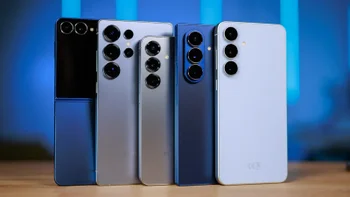

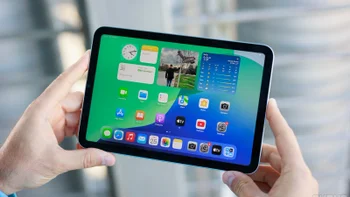



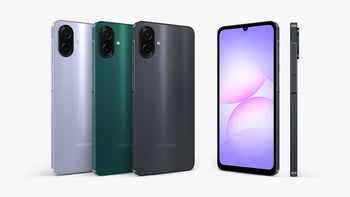

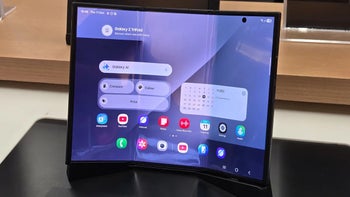
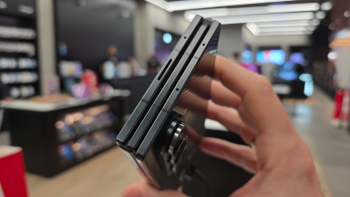
Things that are NOT allowed:
To help keep our community safe and free from spam, we apply temporary limits to newly created accounts: